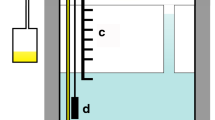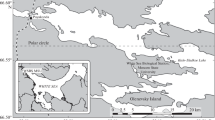Abstract
The influence of diesel fuel and “Arabian light” crude oil contamination were investigated on the land fast ice located in the continental shelf of Terre Adélie, Antarctica, during the austral winter 1993. Autotrophic biomass exhibited a clear seasonal pattern. In uncontaminated sea ice, chlorophyll a concentration showed two maxima, one in April (50 mg m−3) during sea-ice formation, and the second one in spring just before the ice thaw (20 mg m−3). The crude oil and diesel fuel contamination induced a negative effect on ice-microalgae biomass, which remained at a weak level throughout the ice-covered period. However, the inhibitory effect of diesel contamination was immediate while the crude oil effect occurred after the autumn phytoplankton bloom. Addition of fertilizer (Inipol EAP-22) to diesel and crude oil had a clear favourable effect on ice-microalgae. Chlorophyll a biomass exhibited the same seasonal pattern in fertilized and uncontaminated areas.
Similar content being viewed by others
Explore related subjects
Discover the latest articles and news from researchers in related subjects, suggested using machine learning.Author information
Authors and Affiliations
Additional information
Accepted: 10 November 1998
Rights and permissions
About this article
Cite this article
Fiala, M., Delille, D. Annual changes of microalgae biomass in Antarctic sea ice contaminated by crude oil and diesel fuel. Polar Biol 21, 391–396 (1999). https://doi.org/10.1007/s003000050378
Issue Date:
DOI: https://doi.org/10.1007/s003000050378




